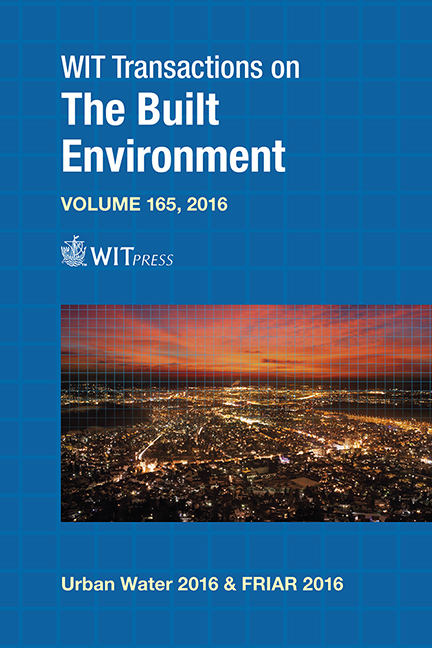Hydraulic Efficiency Of Road Drainage Inlets For Storm Drainage System Under Clogging Effect
Price
Free (open access)
Transaction
Volume
165
Pages
11
Page Range
271 - 281
Published
2016
Size
1,909 kb
Paper DOI
10.2495/UW160241
Copyright
WIT Press
Author(s)
R. Veerappan, J. Le
Abstract
Road drainage inlets are used to collect surface runoff from streets and other land surfaces through grate or curb openings and convey it to storm drains. The surface runoff that is not discharged to the urban storm drainage system due to inadequate inlets or attention to inlet capacity can cause flooding, undue hazards to motorists and pedestrians, and disrupt urban activities.
The aim of this study is to determine the hydraulic efficiencies of three grate inlet designs used in Singapore – G2000 (longitudinal bars), G2012 (lateral bars) and G2014 (lateral bars extended over curb opening) under various road configurations (longitudinal and cross slopes) and operating environments (clogging factors and rainfall intensities). In this study, a road model (1/1 scale) was constructed to configure the geometry of a road with simulated rainfalls of various intensities. The rainfalls were simulated by a network of overhanging pipes at 2m intervals to simulate flow conditions where surface runoff approaches the grate inlets from both the gutter and carriageway. The study showed that the hydraulic efficiencies of G2000 and G2012 grate inlets had a range from 70% to 96% under a non-clogged condition and 28% to 83% under a 100% clogged condition. G2000 grate inlets intercepted 2.5% more flow than G2012 grate inlets. When the clogging was greater than 100%, G2014 grate inlets intercepted 50% more flow than G2000 and G2012 grate inlets. The results of the study will serve as a guide for road geometry and grate designs to optimize the hydraulic efficiency of road drainage inlets.
Keywords
hydraulic efficiency, intercepted flow, road drainage inlet





